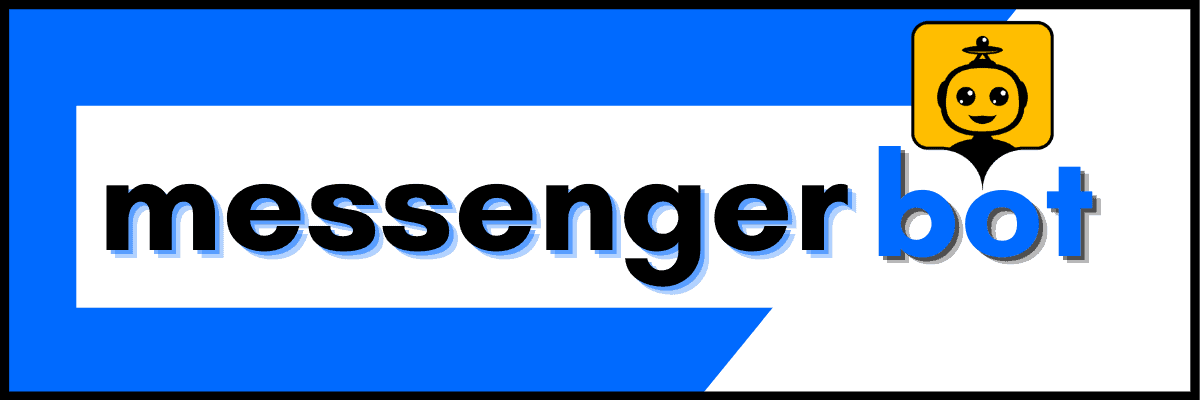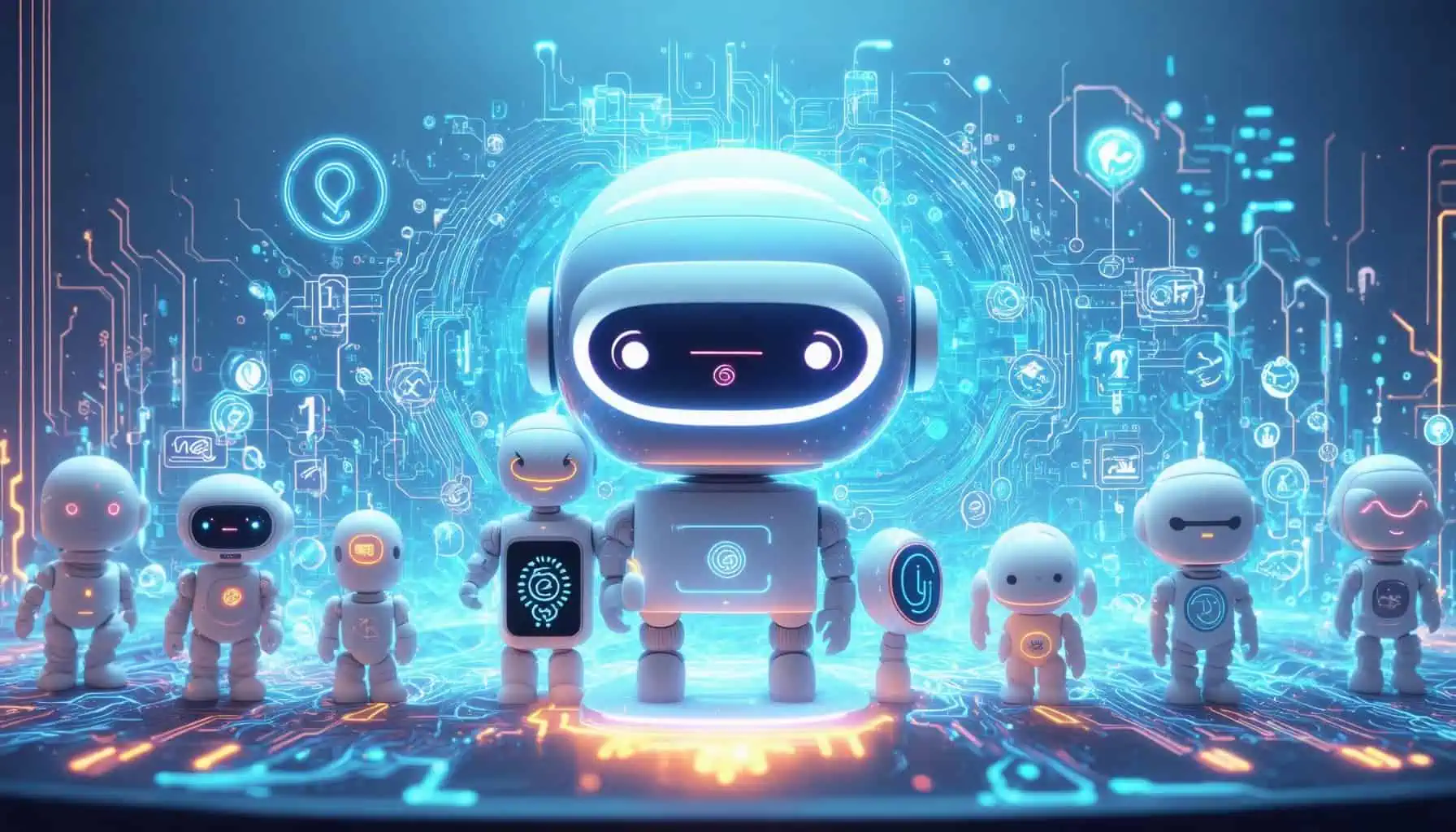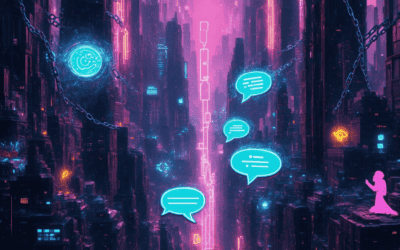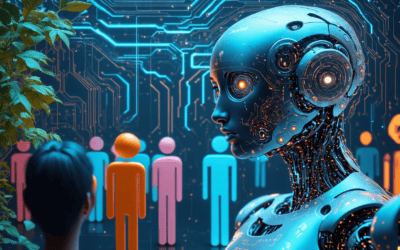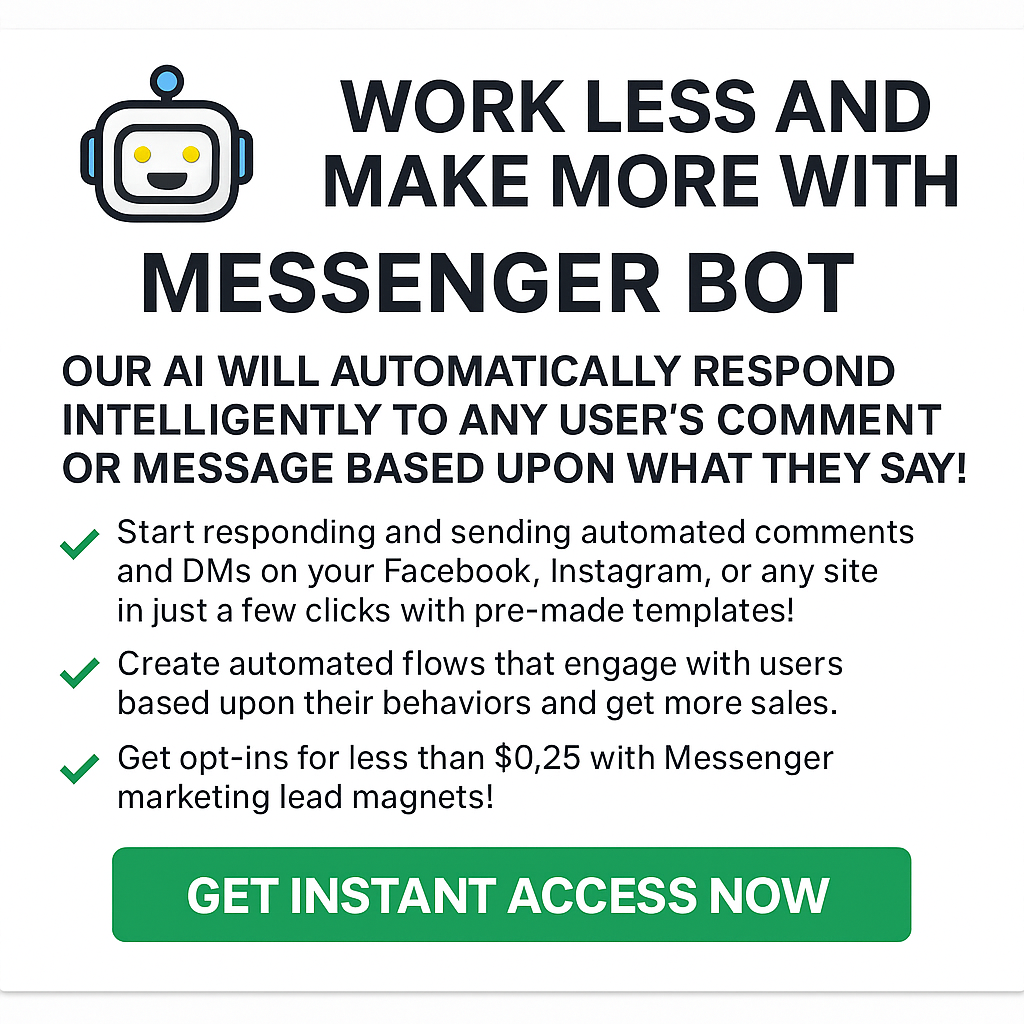Key Takeaways
- Understand the four main types of chatbots: Menu-based, Rule-based, AI-powered, and Voice chatbots, each serving unique user needs.
- Explore popular chatbots like Facebook Messenger, Slack, and WhatsApp bots that enhance customer engagement across platforms.
- Discover the capabilities of Alexa and Siri as advanced chatbots, integrating voice recognition and AI to improve user interactions.
- Learn about the best AI chatbots available today, including Claude AI, ChatGPT, and Jasper, tailored for various applications.
- Stay informed about future chatbot trends, such as multilingual support and voice-activated interactions, shaping the landscape of digital communication.
In today’s rapidly evolving digital landscape, understanding different chatbots is essential for anyone looking to enhance their interaction with technology. This article delves into the fascinating world of chatbots, exploring the four main types of chatbots and providing examples that illustrate their unique functionalities. We will also highlight the most common chatbots you should know, including popular names that have become household staples. As we compare the features of leading options, we will answer the pressing question: which chatbot is best? Furthermore, we will investigate the capabilities of Alexa and Siri, examining their roles in the broader context of chatbot technology. Finally, we will look ahead to the future, discussing the most advanced AI chatbots and the trends shaping their development. Join us as we uncover the insights that will help you navigate the evolving landscape of chatbots.
What are the 4 types of chatbots?
Understanding the different types of chatbots is essential for businesses looking to enhance their digital communication strategies. Each type serves unique purposes and can significantly impact user engagement. Here are the four primary types of chatbots:
Different types of chatbots with examples
- Menu or Button-Based Chatbots: These chatbots provide users with a predefined set of options to choose from, making them straightforward and easy to navigate. Users can click on buttons to receive specific responses, which is ideal for simple queries and tasks.
- Rule-Based Chatbots: Also known as decision-tree chatbots, these operate based on a set of predefined rules. They follow a scripted path to answer user queries, making them effective for handling frequently asked questions. However, they lack the ability to learn from interactions.
- AI-Powered Chatbots: Utilizing natural language processing (NLP) and machine learning, AI-powered chatbots can understand and respond to user queries in a more conversational manner. They learn from interactions, improving their responses over time. This type includes advanced models like those used in customer service applications.
- Voice Chatbots: These chatbots interact with users through voice commands, leveraging speech recognition technology. They are commonly found in virtual assistants like Amazon’s Alexa and Google Assistant, allowing for hands-free operation and a more intuitive user experience.
3 types of chatbots: A closer look
To delve deeper into the chatbot landscape, let’s explore three specific types that are gaining traction:
- Generative AI Chatbots: A newer category, generative AI chatbots utilize advanced algorithms to create responses dynamically based on user input. They can engage in more complex conversations and provide personalized experiences.
- Hybrid Chatbots: Combining elements of rule-based and AI-powered chatbots, hybrid chatbots offer the benefits of both. They can handle straightforward queries with predefined rules while also utilizing AI to manage more complex interactions.
- Multilingual Chatbots: These chatbots can communicate in various languages, making it possible for businesses to reach a diverse global audience. This feature is particularly beneficial for companies operating in multiple regions, enhancing user engagement across different demographics.
Incorporating various chatbot types can enhance user engagement and streamline customer service processes, as evidenced by studies from sources like IBM AI Chatbots and Salesforce Chatbots.

What are the most common chatbots?
The most common chatbots include a variety of platforms and technologies that cater to different user needs. Here’s a comprehensive overview:
- Facebook Messenger Bots: These bots facilitate interactions on the Facebook Messenger platform, allowing businesses to engage with customers through automated responses, personalized messages, and customer service support. According to a report by Business Insider, Messenger bots can significantly enhance user engagement and streamline communication.
- Slack Bots: Integrated within the Slack messaging platform, these bots assist teams by automating tasks, providing reminders, and integrating with other applications. Popular examples include Slackbot, which helps users with reminders and FAQs, and various third-party bots that enhance productivity.
- WhatsApp Bots: These bots enable businesses to communicate with customers directly through WhatsApp, offering services such as order tracking, customer support, and promotional messages. A study by Juniper Research indicates that WhatsApp bots are increasingly popular for customer engagement due to their high open rates.
- Google Assistant: This AI-powered virtual assistant can perform tasks, answer questions, and control smart home devices. It utilizes natural language processing to understand user queries and provide relevant information.
- Amazon Alexa: As a voice-activated assistant, Alexa can perform a variety of tasks, including playing music, providing weather updates, and controlling smart home devices. Its integration with numerous third-party applications makes it a versatile tool for users.
- ChatGPT: Developed by OpenAI, ChatGPT is a conversational AI model that can engage in human-like dialogue, answer questions, and provide information across various topics. Its ability to generate contextually relevant responses makes it a popular choice for businesses looking to enhance customer interaction.
- Drift: This chatbot focuses on marketing and sales, providing real-time communication with website visitors. Drift’s AI capabilities allow it to qualify leads and schedule meetings, improving conversion rates for businesses.
- Intercom: A customer messaging platform that includes chatbots for customer support and engagement. Intercom’s bots can answer common queries, route conversations to human agents, and gather user feedback.
In conclusion, chatbots are becoming increasingly integral to customer service and engagement across various platforms. Their ability to automate interactions and provide instant responses makes them valuable tools for businesses looking to enhance user experience and operational efficiency. For further reading on the impact of chatbots, refer to sources like Gartner and Forrester Research, which provide insights into chatbot trends and effectiveness in customer service.
Different chatbots names you should know
Understanding the landscape of different chatbots is essential for businesses and users alike. Here are some notable names in the chatbot industry:
- IBM Watson Assistant: Known for its robust AI capabilities, IBM Watson Assistant helps businesses create conversational interfaces that can understand and respond to user inquiries effectively. For more details, visit IBM AI Chatbots.
- Microsoft Bot Framework: This framework allows developers to build and connect intelligent bots that can interact with users across various channels. Explore more at Microsoft AI Solutions.
- Salesforce Einstein: Integrated into Salesforce, Einstein provides AI-powered chatbots that enhance customer service and engagement. Learn more about its features at Salesforce Chatbots.
- Brain Pod AI: This platform offers a range of AI services, including chatbots that can assist with customer interactions and automate responses. Check out their offerings at Brain Pod AI.
These chatbots exemplify the diverse capabilities available in the market, each designed to meet specific business needs and enhance user engagement.
Which Chatbot is Best?
When evaluating which chatbot is best for various applications, several factors come into play, including functionality, user experience, and specific use cases. Based on recent analyses and user feedback, here are some of the top contenders:
Best AI Chatbot Options Available Today
- Claude AI: Recognized for its exceptional capabilities in visualization and structured formatting, Claude AI excels in generating clear, data-driven charts and workflow previews. This makes it an ideal choice for content creators who require organized and visually appealing outputs. According to a review by Buffer, Claude AI’s performance in these areas is unmatched, making it a top recommendation for professionals focused on content creation.
- ChatGPT: Developed by OpenAI, ChatGPT is renowned for its conversational abilities and adaptability across various topics. It offers a robust platform for customer service, content generation, and educational purposes. Its extensive training on diverse datasets allows it to provide nuanced responses, making it suitable for both casual users and businesses.
- Jasper: Jasper is tailored specifically for marketers and content creators, offering features that assist in generating high-quality written content efficiently. Its AI-driven suggestions help streamline the writing process, making it a valuable tool for those looking to enhance their content marketing strategies.
- Microsoft Bot Framework: This framework allows developers to create sophisticated chatbots that can integrate with various Microsoft services. Its versatility and scalability make it a strong choice for enterprises looking to implement chatbots across multiple platforms.
- Google Dialogflow: Known for its natural language processing capabilities, Dialogflow is ideal for businesses seeking to build conversational interfaces. It supports multiple languages and can be integrated into various applications, making it a flexible option for developers.
Comparing Features of Popular Chatbots
In conclusion, while Claude AI is highlighted for its visualization strengths, the best chatbot ultimately depends on your specific needs. For content creators, Claude AI offers unparalleled structured outputs, while ChatGPT and Jasper provide robust conversational and content generation capabilities. For businesses, Microsoft Bot Framework and Google Dialogflow offer powerful tools for creating customized chatbot solutions. For further reading and insights, consider exploring resources from Buffer, OpenAI, and industry-specific blogs that analyze chatbot performance and user experiences.
Is Alexa a Chatbot?
Amazon’s Alexa is not just a voice assistant; it has evolved into a sophisticated AI chatbot capable of engaging in conversational interactions. Initially designed for voice commands and smart home control, Alexa now incorporates advanced natural language processing (NLP) and machine learning technologies, allowing it to understand context and provide more relevant responses.
Understanding Alexa’s Capabilities as a Chatbot
Key features of Alexa as a chatbot include:
- Conversational Abilities: Alexa can hold multi-turn conversations, remembering context from previous interactions, which enhances user experience and engagement.
- Skill Integration: Alexa supports thousands of third-party skills, enabling users to access a wide range of services, from ordering food to playing games, much like a traditional chatbot.
- Continuous Learning: With each interaction, Alexa learns and adapts, improving its responses over time. This is similar to how Messenger Bots operate, utilizing user data to refine their conversational capabilities.
- Voice and Text Interaction: Users can interact with Alexa through voice commands or text via compatible devices, making it versatile in communication methods.
- AI Upgrades: Recent updates have introduced more advanced AI features, positioning Alexa as a competitive player in the chatbot space, as highlighted by CNN Business.
Alexa vs. Other Chatbots: A Comparison
When comparing Alexa to other chatbots, such as those offered by IBM and Microsoft, several distinctions emerge:
- Integration with Smart Devices: Unlike many chatbots that primarily function within apps or websites, Alexa seamlessly integrates with smart home devices, enhancing its utility.
- Natural Language Processing: Alexa’s NLP capabilities allow for more fluid conversations, making it user-friendly compared to some traditional chatbots that may struggle with context.
- Multi-Platform Accessibility: While many chatbots are limited to specific platforms, Alexa can be accessed through various devices, including smartphones, smart speakers, and even some appliances.
- Customization and Skills: The ability to add skills makes Alexa highly customizable, allowing users to tailor their experience, which is a feature that sets it apart from many other chatbots.
For further insights into the evolving landscape of chatbots, explore advanced chatbots and their applications.

Is Siri a Chatbot?
Siri is more than just a voice-activated assistant; it has evolved significantly since its inception. Originally developed by SRI International and launched as an iOS app in 2010, Siri utilizes advanced voice recognition and natural language processing (NLP) technologies to interpret and respond to user commands effectively. This evolution enables users to engage in more natural dialogues, even when they make errors in speech or need to clarify their requests.
Chatbot Capabilities
With the integration of Apple Intelligence, Siri’s capabilities have expanded to include enhanced chatbot features. Siri employs cutting-edge AI technologies, including machine learning and NLP, to comprehend and address user inquiries, including those that involve complex conversational threads. This integration allows Siri to adapt to various contexts and provide more relevant responses.
Personalization and Privacy
Siri’s ability to personalize responses based on user preferences and historical interactions enhances its functionality. By learning from past queries, Siri can offer tailored suggestions and reminders, making it a more effective assistant. Additionally, Apple prioritizes user privacy, ensuring that Siri processes requests on-device whenever possible. Data sent to Apple’s servers is anonymized and encrypted, safeguarding user information.
What are the most advanced AI chatbots?
The most advanced AI chatbots for 2025 include several leading models that excel in various applications, from customer service to creative content generation. Here are some of the top contenders:
- Claude Opus: Developed by Anthropic, Claude Opus is recognized for its exceptional language comprehension and content creation capabilities. It offers advanced coding assistance and maintains a high processing speed comparable to other leading models like Sonnet, but with enhanced depth in understanding context and nuances in conversation.
- ChatGPT-4: OpenAI’s latest iteration, ChatGPT-4, has significantly improved its conversational abilities, making it adept at handling complex queries and providing detailed responses. Its training on diverse datasets allows it to generate human-like text, making it suitable for various applications, including tutoring and creative writing.
- Google Bard: Leveraging Google’s extensive data resources, Bard is designed to provide accurate and contextually relevant information. Its integration with Google Search enhances its ability to deliver real-time information, making it a powerful tool for users seeking up-to-date answers.
- Microsoft Copilot: This AI chatbot integrates seamlessly with Microsoft Office applications, assisting users in drafting documents, generating reports, and even coding. Its ability to understand user intent and provide contextual suggestions makes it a valuable asset in professional settings.
- Jasper AI: Focused on content creation, Jasper AI is tailored for marketers and writers. It utilizes advanced algorithms to generate high-quality copy, blog posts, and social media content, making it a favorite among content creators.
- Replika: Designed as a personal AI companion, Replika focuses on emotional intelligence and user engagement. It learns from interactions to provide personalized conversations, making it a unique offering in the chatbot landscape.
These chatbots represent the forefront of AI technology, each with unique features that cater to different user needs. For further insights into the capabilities and comparisons of these models, refer to sources such as OpenAI’s research publications and industry analyses from reputable tech blogs like TechCrunch and Wired.
Innovations in advanced AI chatbots
As we explore the innovations in advanced AI chatbots, it’s essential to recognize the ongoing advancements in natural language processing (NLP) and machine learning. These technologies are driving the capabilities of chatbots, enabling them to understand context, sentiment, and user intent more effectively. For instance, platforms like Brain Pod AI are at the forefront, offering generative AI solutions that enhance chatbot functionalities across various domains.
Moreover, the integration of AI chatbots into e-commerce platforms is revolutionizing customer interactions. With features like automated responses and workflow automation, businesses can streamline their operations and improve user engagement. The Messenger Bot, for example, provides comprehensive tools for managing social media interactions and lead generation, making it an invaluable asset for businesses looking to enhance their digital communication strategies.
Future trends in chatbot technology
Looking ahead, several trends are shaping the future of chatbot technology. One significant trend is the increasing emphasis on multilingual support, allowing businesses to cater to a global audience more effectively. Chatbots that can communicate in multiple languages are becoming essential for companies aiming to expand their reach.
Additionally, the rise of voice-activated chatbots is transforming user interactions. As seen with platforms like IBM AI Chatbots and Microsoft AI Solutions, voice recognition technology is enhancing the user experience by providing hands-free interaction capabilities. This trend is likely to continue as more users seek convenience in their digital communications.
In conclusion, the landscape of advanced AI chatbots is rapidly evolving, driven by innovations in technology and changing user expectations. As we move forward, staying informed about these advancements will be crucial for businesses looking to leverage chatbot technology effectively.
Conclusion: The evolving landscape of different chatbots
As we conclude our exploration of different chatbots, it’s clear that the landscape is rapidly evolving. With advancements in artificial intelligence and natural language processing, chatbots are becoming increasingly sophisticated, enabling businesses to enhance user engagement and streamline operations. The integration of features like automated responses, workflow automation, and multilingual support is transforming how companies interact with their customers.
Recap of key insights on chatbots
Throughout this article, we examined various types of chatbots, including rule-based and AI-driven models, and highlighted popular options such as Messenger Bot, IBM AI Chatbots, and Salesforce Chatbots. Each of these platforms offers unique functionalities tailored to different business needs. For instance, Messenger Bot excels in automating responses and lead generation, while IBM focuses on enterprise-level solutions. Understanding these differences is crucial for businesses looking to implement effective chatbot strategies.
The future of chatbot technology and user interaction
Looking ahead, the future of chatbot technology promises even more innovations. As user expectations evolve, chatbots will likely incorporate advanced features such as enhanced emotional intelligence and deeper contextual understanding. This shift will enable more personalized interactions, making chatbots an integral part of customer service and engagement strategies. For businesses, staying updated on these trends is essential to leverage the full potential of chatbot technology. To explore more about the latest advancements in chatbot capabilities, check out our article on advanced chatbots.
